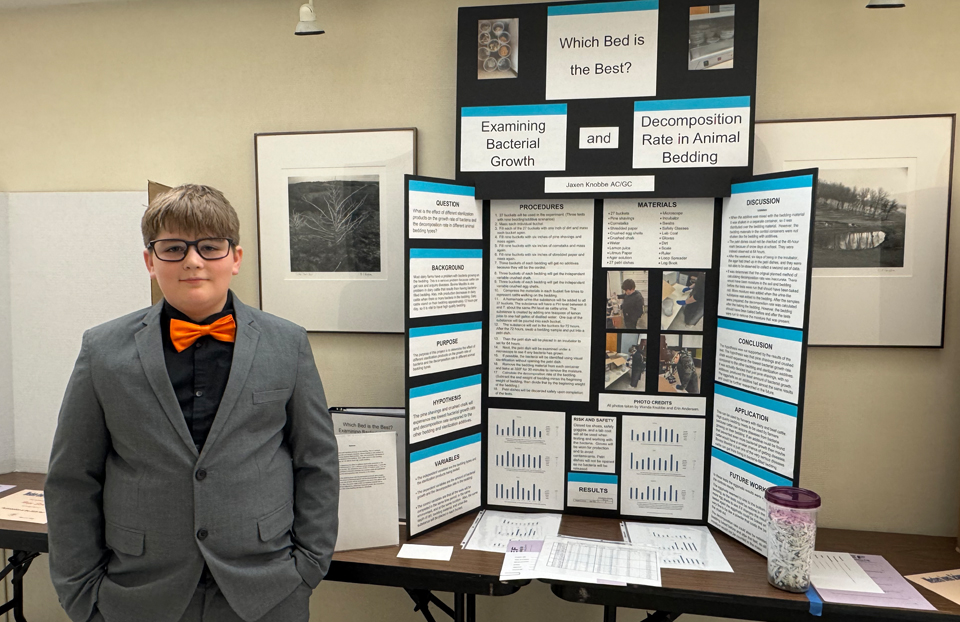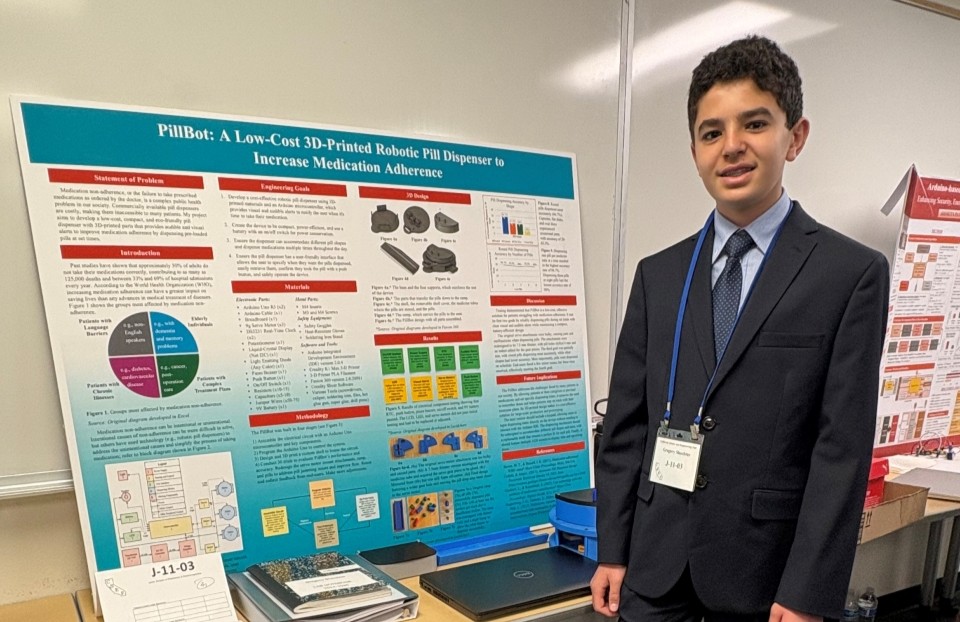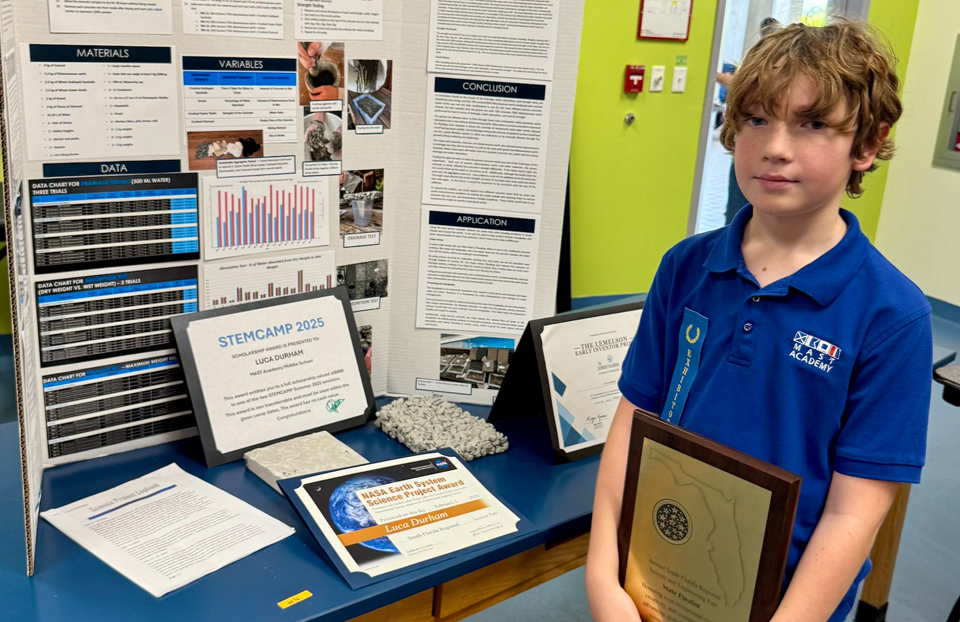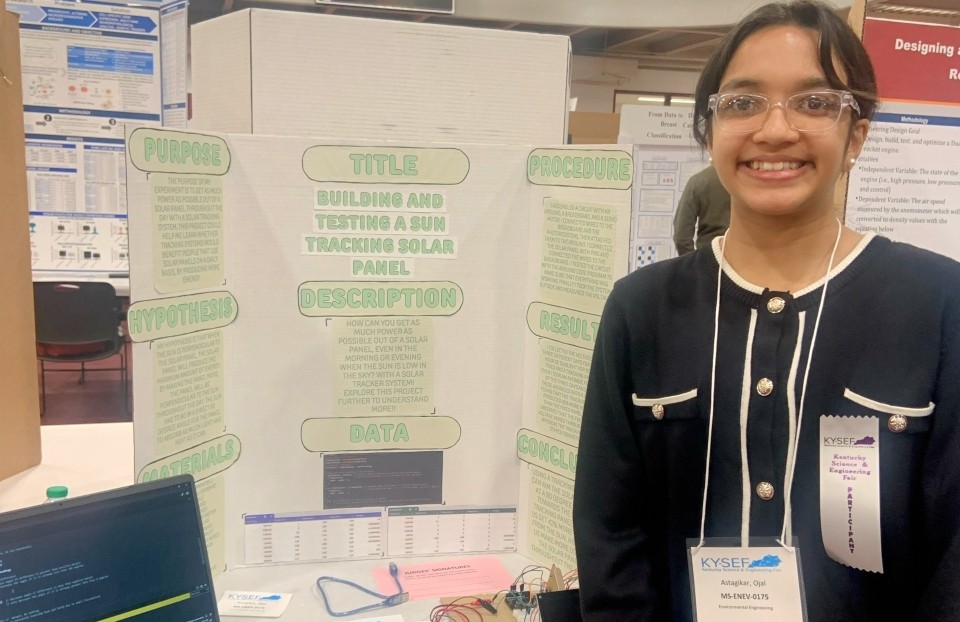The importance of healthy microbes in livestock beds

For the seventh year, The Lemelson Foundation is awarding $100 prizes to outstanding young inventors in Society Affiliate Fairs with middle school participants across the country. The prize was created to recognize young inventors whose projects exemplify inventive thinking by identifying challenges in their communities and creating solutions that make a difference.
Just as we humans take our time choosing the right bed, Jaxen Knobbe, a seventh grader from Guthrie Center, Iowa, wondered about the right bed for cattle. His Lemelson Early Inventor Prize-winning project, “Which Bed is the Best? Examining Bacterial Growth and Decomposition Rate in Animal Bedding,” explores exactly that.
This project addresses a common challenge faced by many dairy farmers: the growth of bacteria in cattle bedding. These bacteria can lead to diseases such as Bovine Mastitis and Foot Rot.
Notable issues can arise when cattle are housed in bedding filled with bacteria, such as decreased milk production. Since dairy cattle spend an average of 12 hours a day on their bedding, it’s crucial that the bedding is clean and of high quality.
Jaxen approached this problem by testing different sterilization products, bedding materials, then measuring the decomposition rates. He set up buckets containing different bedding materials and a cattle urine-like substance to assess bacterial growth. Jaxen hypothesized that pine shavings and crushed chalk would produce the lowest bacterial growth and decomposition rates compared to the other bedding and sterilization additives.
The control variables were completed at the same time, same environment and same location. Data was then collected by looking at the petri dishes and counting the number of bacterial colonies grown in each bucket. Jaxen found that pine shavings, with no additives, produced the least amount of bacterial growth.
Observing the bacterial growth was Jaxen’s favorite part of this project.
“I liked being able to look at each petri dish through the microscope and see similarities and differences among all the petri dishes,” Jaxen says.
All great scientists encounter challenges in their research, and for Jaxen, the most difficult part of the project was evaluating the decomposition rate of the bedding.
“When I started the testing, I did not bake the bedding to get all the extra moisture out of it,” Jaxen says. “After the test samples were created, I realized I would have had to bake the bedding at the beginning of the test if I wanted the most accurate results.”
Jaxen says earning the Lemelson Early Inventor Prize in the Western Iowa Science and Engineering Fair has motivated him to do more research.
“This recognition means a lot to me. I am very honored to be picked for the Lemelson Early Inventor Prize,” Jaxen says. “Earning this award has inspired me to move farther into my science fair journey and work harder to achieve my goals.”


